Benjamin W. Abbott1, August 25, 2025,
1Brigham Young University, Department of Plant & Wildlife Sciences
The Aral Sea was formerly the fourth largest lake in the world (26,300 square miles), supporting one of the most profitable inland fisheries globally1,2. This saline lake was located at the boarder of Kazakhstan and Uzbekistan, and its watershed now links seven countries in the Middle East and Asia. The destruction of the Aral Sea is considered to be one of the most catastrophic human-caused ecological disasters in history because of its immense and largely unmeasured damage to public health, economy, and culture3,4.
In the 1950s, the Soviet Union diverted around 75% of the river flow to grow alfalfa, cotton, and rice in the arid regions to the south and east of the Aral Sea5,6. These centrally planned and unsustainable water projects resulted in the self-reinforcing hydrological collapse of the lake5,7. By the 2000s, the lake had dropped 75 feet and lost more than 90% of its area, with only a small dammed portion in the far north remaining4. Salinity got too high for fish in the 1980s, and between 50,000 to 100,000 fishing jobs were destroyed4,5,8,9.
Efforts to reverse the disaster focused on diking the lake to reduce evaporation and belief in a water importation project to bring water from Siberian rivers into the watershed4. These efforts failed, resulting in the near total collapse of the lake. Widespread desertification followed the lake’s shrinkage. Precipitation in the region decreased by around 60%, and seasonal temperature swings increased by more than 18° F, with summer temperatures now spiking to 10° F hotter than before the lake’s disappearance4,5,10.
Dust emissions from the growing area of dry lakebed increased from 14 to 27 million tons annually, increasing particulate matter pollution in Central Asia as a whole by 7%11. Dust storms from the dry lakebed, which is now known as the Aralkum Desert, routinely blanket large cities from Tehran to Dushanbe, affecting regional snowpack and glaciers that provide the water supply for over one billion people3,10,12–14. These toxic salt storms can force residents hundreds of miles away from the dry lakebed to stay indoors for days while killing crops and cattle15,16.
Beyond the acute effects of dust storms, the air pollution and desertification from the loss of the lake has damaged agricultural productivity in the region, including salinization of soils, toxic effects on crops, and erosion of soil fertility17. Farmers have had to revert to soil “washing,” where they irrigate to remove salinity and pollutants from the soil twice a year prior to planting and harvesting18. 74% of the population is now below the poverty line17.
Exposure to lake dust and the associated toxins have caused a regional health emergency. Rates of cancer are now 50-60% higher in the area around the former Aral Sea compared to reference areas farther from the lake19, and infant mortality in the region has risen from 45 to 72 deaths per 1,000 live births4.
Because of Soviet censorship and inadequate documentation, there are no official estimates of the total outmigration from the region caused by the lake’s decline. Independent research suggests that the lake’s collapse triggered the self-deportation of 100,000 to 700,000 people by the 1990s and continued outmigration since9,19–21. The autonomous region of Karakalpakstan in Uzbekistan and the portion of Kazakhstan bordering the lake have been the hardest hit4,10,22. There is no authoritative estimate of how many villages and cities were permanently abandoned, but the remaining cities in the region (e.g., Moynaq and Aralsk) have transitioned from being vibrant ports to remnant communities largely supported by disaster tourism4,22.

Figure 1. Satellite imagery of changes in the Aral Sea due to water diversions19.
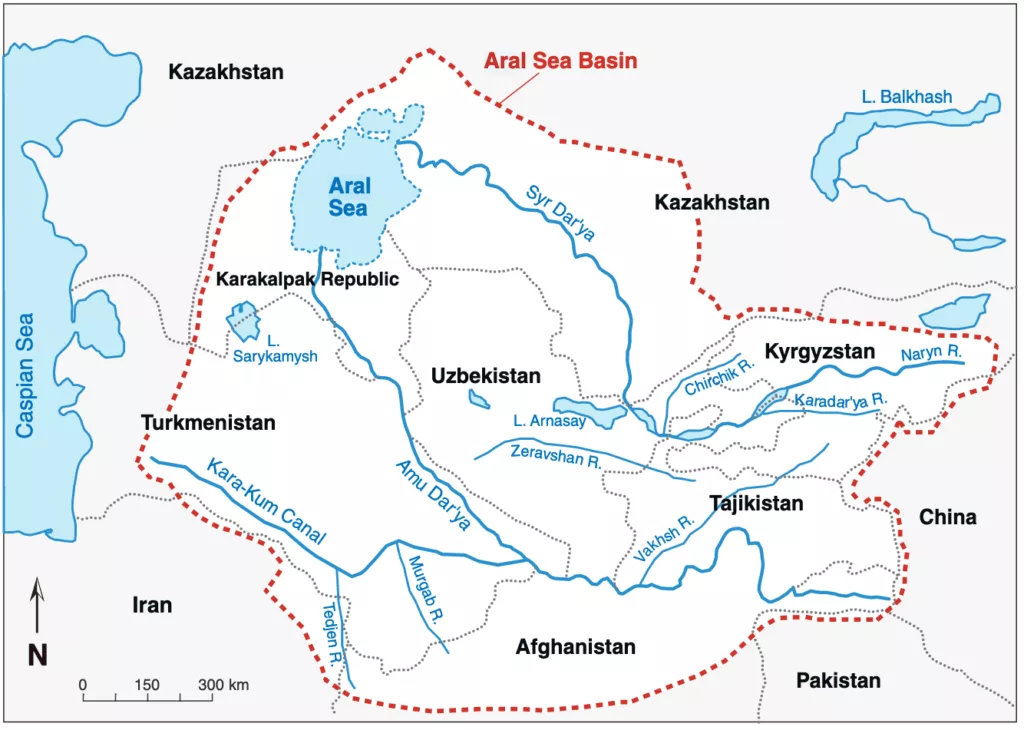
Figure 2. Map of the Aral Sea watershed, showing the seven nations that now divert and consume water from the lake’s tributaries. The Kara-Kum Canal in the lower-right corner is the largest single water diversion project4.
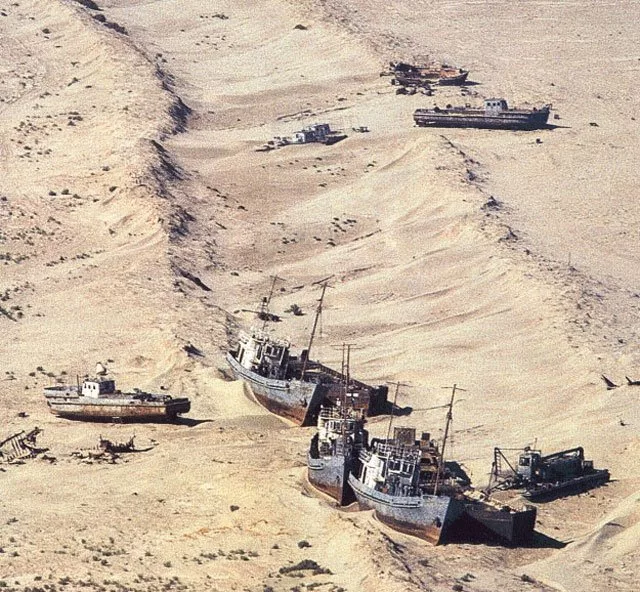
Figure 3. Picture of abandoned fishing vessels on the dry bed of the Aral Sea near Moynaq, Uzbekistan.
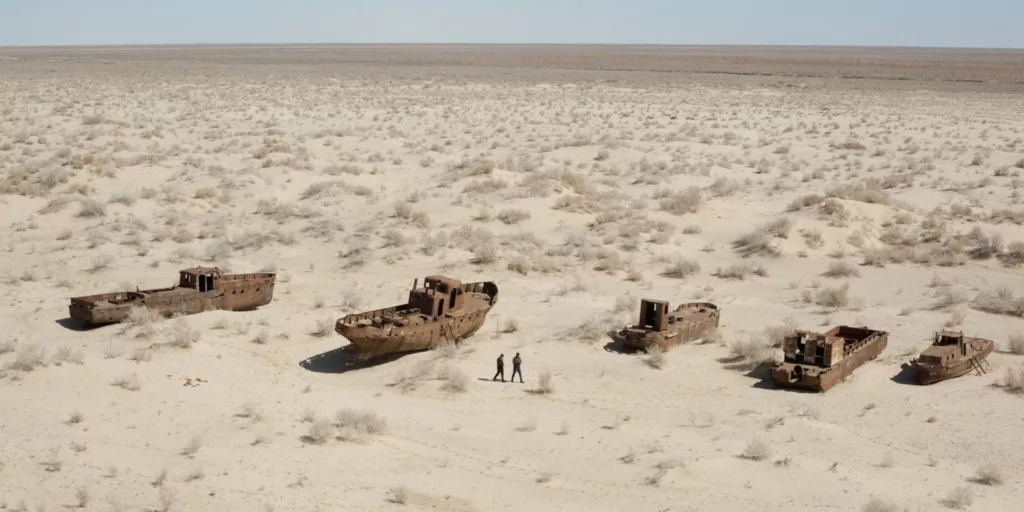
Figure 3. Abandoned boats vessels on the dry bed of the Aral Sea near Aralsk, Kazhakstan. Carolyn Drake, Nat Geo image collection.
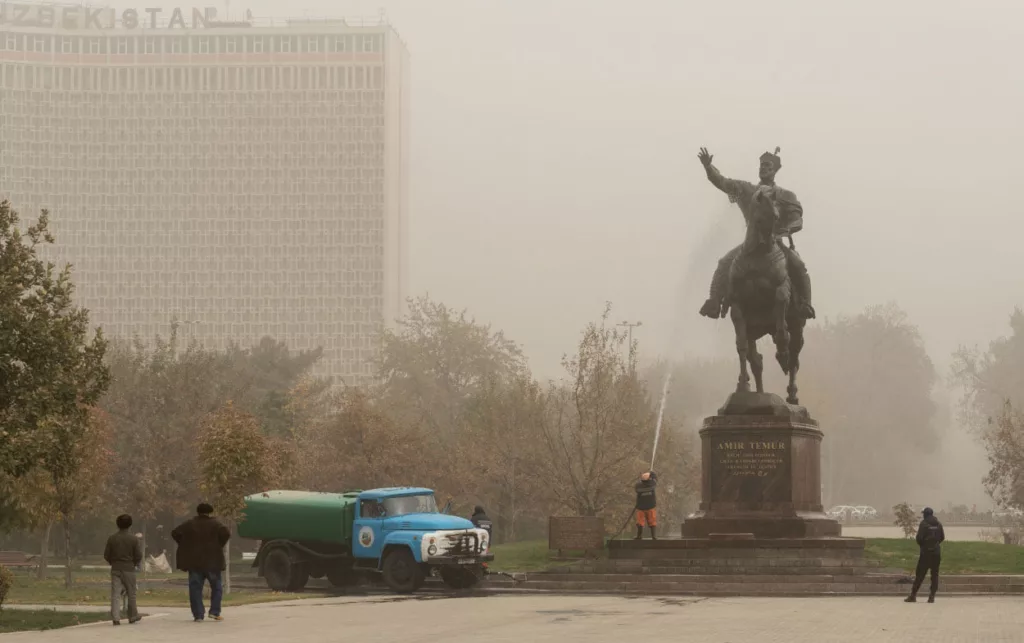
Figure 4. Photo of the air quality following a dust storm in Tashkent, Uzbekistan on November 4, 2021. The air pollution remained for nearly 10 days following the event.
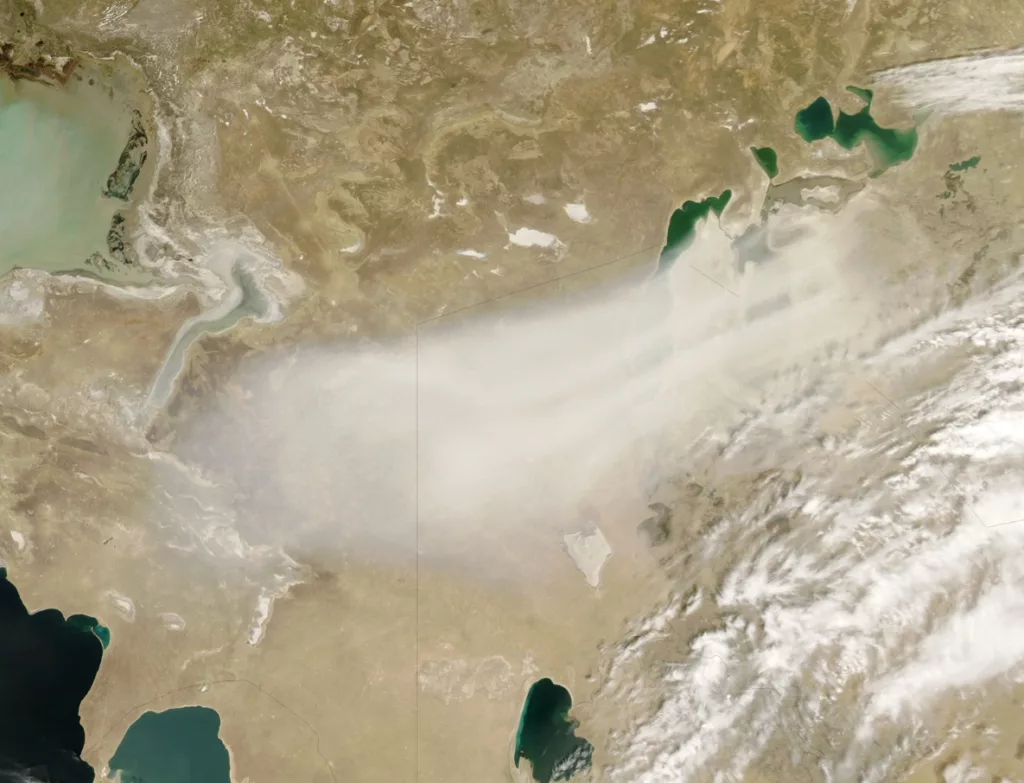
Figure 5. Satellite image of a dust storm blowing off the former Aral Sea reaching the Caspian Sea.
References
1. Witnessing an environmental catastrophe: Reflections from the dried-up Aral sea. UNCCD https://www.unccd.int/news-stories/special-feature/witnessing-environmental-catastrophe-reflections-dried-aral-sea.
2. Nations, U. Dry Tears of the Aral. United Nations https://www.un.org/en/chronicle/article/dry-tears-aral.
3. Skrivanek, R. The Dying Sea. Places Journal (2011) doi:10.22269/110420.
4. Micklin, P. The Aral Sea Disaster. Annual Review of Earth and Planetary Sciences 35, 47–72 (2007).
5. Gaybullaev, B., Chen, S.-C. & Gaybullaev, D. Changes in water volume of the Aral Sea after 1960. Appl Water Sci 2, 285–291 (2012).
6. Sidik, S. M. When the Aral Sea Dried Up, Central Asia Became Dustier. Eos http://eos.org/research-spotlights/when-the-aral-sea-dried-up-central-asia-became-dustier (2022).
7. Baker-Brite, E. The Aral Sea Disaster. https://globalstudiesoutreach.harvard.edu/sites/g/files/omnuum8946/files/globalstudiesoutreach/files/brite-aral-sea-harvard_edited_compressed.pdf (2013).
8. Hollis, G. E. The Falling Levels of the Caspian and Aral Seas. The Geographical Journal 144, 62–80 (1978).
9. Rechkemmer, A. Societal Impacts of Desertification: Migration and Environmental Refugees? in Facing Global Environmental Change (eds. Brauch, H. G. et al.) vol. 4 151–158 (Springer Berlin Heidelberg, Berlin, Heidelberg, 2009).
10. Pearce, F. When the Rivers Run Dry: Water, the Defining Crisis of the Twenty-First Century. (Beacon Press, 2006).
11. Banks, J. R., Heinold, B. & Schepanski, K. Impacts of the Desiccation of the Aral Sea on the Central Asian Dust Life-Cycle. Journal of Geophysical Research: Atmospheres 127, e2022JD036618 (2022).
12. Banks, J. R., Heinold, B. & Schepanski, K. Dust aerosol from the Aralkum Desert influences the radiation budget and atmospheric dynamics of Central Asia. Atmospheric Chemistry and Physics 24, 11451–11475 (2024).
13. Chen, Z., Gao, X. & Lei, J. Dust emission and transport in the Aral Sea region. Geoderma 428, 116177 (2022).
14. Kemelova, F. Scientists Warn About Glacier Melt from Aral Sea Sand Storm on UN Desertification and Drought Day. The Astana Times https://astanatimes.com/2024/06/scientists-warn-about-glacier-melt-from-aral-sea-sand-storm-on-un-desertification-and-drought-day/ (2024).
15. Uzbekistan assailed by cataclysmic sand and salt storm | Eurasianet. Eurasianet (2018).
16. Nishonov, B. E. et al. Study of the strongest dust storm occurred in Uzbekistan in November 2021. Sci Rep 13, 20042 (2023).
17. Agriculture Sector in Uzbekistan and Karakalpakstan. https://gggi.org/wp-content/uploads/2021/08/Insight_Brief_Legal__Policy_Review_Agriculture_Sector.pdf (2022).
18. 2022 Karakalpakstan Agriculture Risk Profile. https://www.greenpolicyplatform.org/sites/default/files/downloads/resource/Risk%20Profile_clean.pdf (2022).
19. Anchita et al. Health Impact of Drying Aral Sea: One Health and Socio-Economical Approach. Water 13, 3196 (2021).
20. UNHCR. UNHCR publication for CIS Conference (Displacement in the CIS) – Ecological disasters: the human cost. UNHCR https://www.unhcr.org/publications/unhcr-publication-cis-conference-displacement-cis-ecological-disasters-human-cost.
21. Feshbach, M. Ecocide in the USSR. (1993).
22. CPC | The Cautionary Tale of the Aral Sea: Environmental Destruction at Economic Costs. Caspian Policy Center https://www.caspianpolicy.org/research/energy-and-economy-program-eep/the-cautionary-tale-of-the-aral-sea-environmental-destruction-at-economic-costs-12361.
